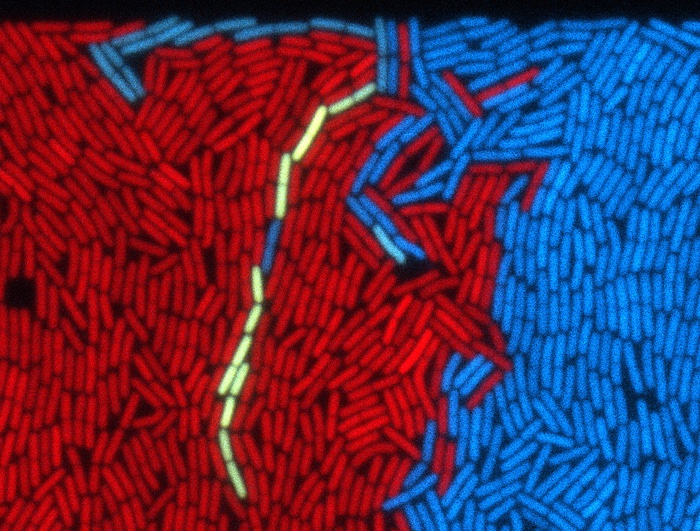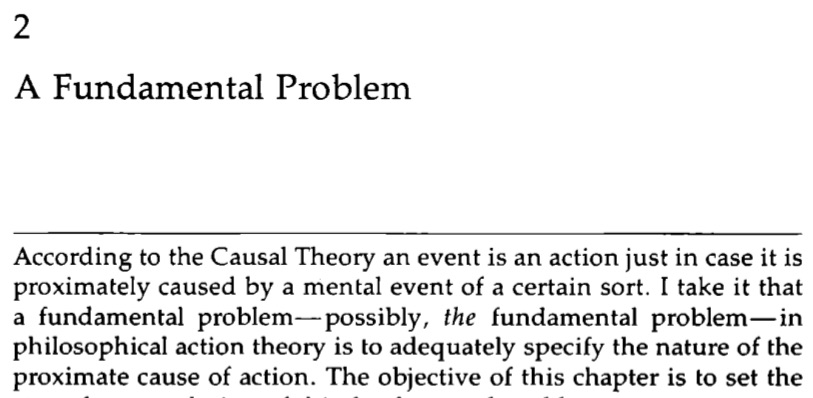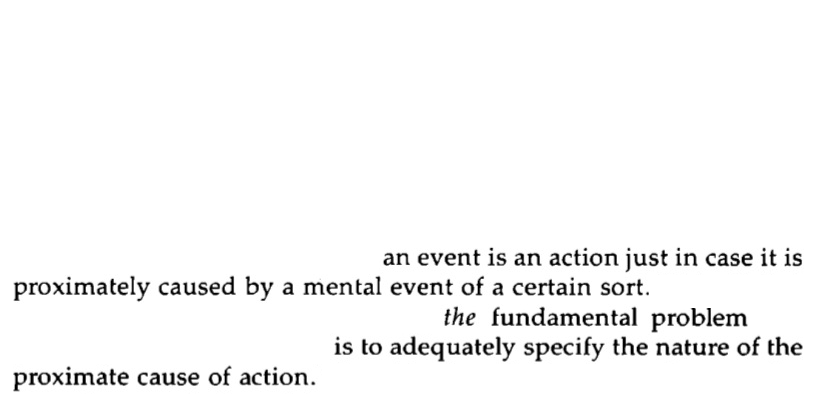Click here and press the right key for the next slide.
(This may not work on mobile or ipad. You can try using chrome or firefox, but even that may fail. Sorry.)
also ...
Press the left key to go backwards (or swipe right)
Press n to toggle whether notes are shown (or add '?notes' to the url before the #)
Press m or double tap to slide thumbnails (menu)
Press ? at any time to show the keyboard shortcuts
Solution to the Problem of Action

challenge
Discover why people act,
individually and jointly.
What distinguishes your actions from things that merely happen to you?

‘Now what is an action? Not one thing, but a series of two things: the state of mind called a volition, followed by an effect. The volition or intention to produce the effect, is one thing; the effect produced in consequence of the intention, is another thing; the two together constitute the action.’
Mill, System of Logic (1.3.6) quoted in Hyman (2015, p. 218)


Objection 1
habitual processes
Some actions run counter to any of the agent’s intentions because they are dominated by habitual processes.
Objection 2
motor processes
Invoking motor representations yields a solution to the problem of action that is no worse than the Standard Solution.
Integration Questions (x2): Yes, they actually conflict.
Next step: how to revise the theories?
a nonstandard solution

background
goal != intention
A goal is an outcome to which an action is directed.
Which outcomes are achievable?
For each outcome, which means of achieving it are available?
Of the various means of achieving a given outcome, which best balance cost against well-suitedness?
Of the achievable outcomes, which best balance cost against expected benefit?
For an action to be directed to an outcome is for it to occur because there is one or more outcome in relation to which problems such as these have been, or appear to have been, solved.
---
Having settled on an outcome and means, when should these be maintained?
...
An action is an event that is directed to an outcome.

challenge
Discover why people act,
individually and jointly.
What distinguishes your actions from things that merely happen to you?
An action is an event that is directed to an outcome.
Objection 1
habitual processes
Some actions run counter to any of the agent’s intentions because they are dominated by habitual processes.
Objection 2
motor processes
Invoking motor representations yields a solution to the problem of action that is no worse than the Standard Solution.
An action is an event that is directed to an outcome.
Note
This only works for purposive actions.


Brand, 1984
1. Which things are actions (as opposed to mere happenings)?
— explained by problems to be solved
2. Which states or processes enable agents to act?
— identified by conjecture + discovery

challenge
Discover why people act,
individually and jointly.
What distinguishes your actions from things that merely happen to you?
An action is an event that is directed to an outcome.
1. Solve the Problem of Action. ✓
2. Identify a role for motor representation in joint action.